Billy Mock 540.300.1445
help@oldetownewd.com
Serving Fredericksburg, VA
and Surrounding Areas
"To the folks at oldeTowne Window and Door, I wanted to thank you for the
friendly, efficient, service that your company provided to our family at 2
Pickering Rd. The lock installation and insulation have made all the
difference. The door looks great and feels secure and warm.
Your installer was courteous and worked with us to custom install our lock
and handle set. He clearly was experienced and professional.
In the future, when we replace our windows, we'll definitely call you."
"Renoylds"
The entry door is the beginning of the journey through your home. It's the first thing people notice, and it's the last thing they'll see when they leave. Olde Towne Window & Door is here to help you make a decision that may well last you a lifetime. Here we will cover the following topics: |
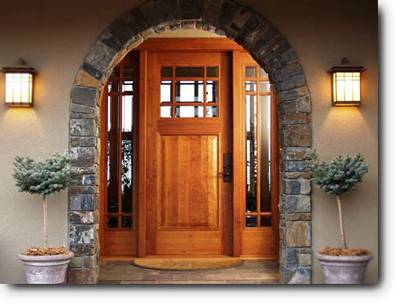 |

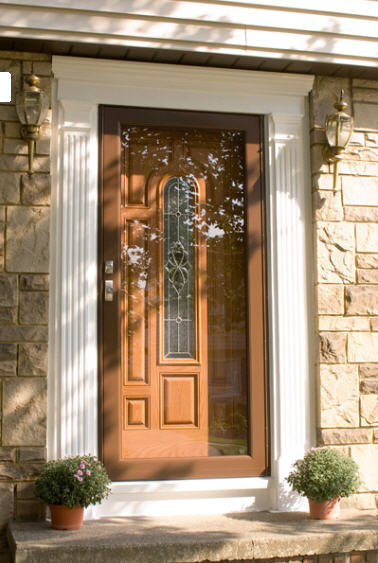
Durable,oven-baked polyster finishes are backed by a lifetime warranty for lasting beauty and low maintenance.
Extruded aluminium frame adds beauty to your door by virtue of the rounded cove molding along the glass edge of the extrusion.
All our storm doors are constructed with tempered safty glass.
You'll appreciate the finished look of our color matched aluminium installation screws covers.
Each door features quality hardware that adds beauty and functionality to your new storm door. Varies by model.
Sashes are scured from our color matched polycarbonate clips or an internal sash lock system. Varies by model.
Smooth function is essential. That's why we include a quality door closer in every storm door package. Varies by model.

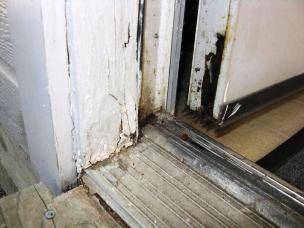 |
There are a few determining factors that will help you decide if door replacement makes sense for your home. The following are just a few telltale signs that your door needs replacement.
|

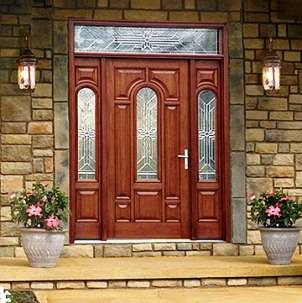
The thought of replacing your old door with a new replacement door can be daunting and understandably so, but don't get discouraged too soon. Proper planning is the most effective way to ensure you install the right door one that complements your needs, style and budget.
Needs
There are many reasons that people choose to replace their old door. Appearance, deterioration, maintenance and energy efficiency are just a few. Once you decide to purchase a new replacement door for your home and determine the reason why, you automatically narrow down your search making it easier to reach a decision. Some door materials may be better for one reason, others for another.
Style
Once the budget is set, it is safe to start selecting your door style and materials. Think about the room in which the door will be placed. Is it your entry door or a patio door hidden away in the back? It is safe to use several different styles throughout your home. Keep in mind, however, that some doors may involve a bit more maintenance than others. For example wood replacement doors require a little more up-keep than fiberglass replacement doors, which are virtually maintenance free.
Budget
Setting a budget that works for you should be your next step. Doors are generally priced very differently; hence, the materials you choose can dramatically affect your budget. Typically steel doors are the cheapest and should only be used for non-entry doors. Vinyl paito doors are also very economical but tend to be a little on the light side. Fiberglass doors are next; heavy, durable and textured, they are a great alternative to wood. Wood doors are by far the most expensive, but there is no replacement for the beauty of natural wood.

As you may have already guessed, there are extensive benefits of energy efficient doors; hence the words "energy efficient." Some of these benefits, however, extend beyond the more obvious ones. The following is just a quick look at many benefits that energy efficient doors offer:

One of the very first benefits of energy efficient doors is that they are exceptionally energy efficient. Gas-fills, insulation spacers and frames, as well as Low-E coatings can all considerably reduce the winter heat loss and summer heat gain.
Doors have represented a major source of unwanted heat loss, discomfort, and condensation problems in locations with cooler climates that require extensive heating. Energy efficient doors perform well during the winter months by keeping the heat from escaping outside. On the other hand, climates that mainly require cooling have problems with doors that represent a major source of unwanted heat gain. High performance doors do well by keeping that heat out.
Improved comfort
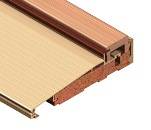
Energy efficient doors not only reduce energy costs but make homes more comfortable as well. Conventional and older doors with low glass temperature feel colder in winter months, have more drafts, and contribute to a person's heat being radiated to the door. However, energy efficient doors with lower U-factors offer much better insulation and more moderate door temperatures; thus, providing greater comfort.
Likewise, in the summer, energy efficient doors will reduce the solar radiation coming though the glass making it more comfortable to the occupant.
Reduced condensation
High performance doors with good frames and glazing materials create warmer interior glass surfaces, resulting in less frost and condensation.
Prevents UV damage
High performance doors can significantly reduce the ultraviolet (UV) and other solar radiation. Coatings on glass can reduce the UV transmitted by up to 88%. Glass that blocks UV radiation reduce fabric, artwork and paint fading.
Lower sound transmission
The heavy gas fills that energy efficient doors offer, greatly reduces the sound transmission from the outside to inside. The greater the number of panes, the better the sound absorption.

Note: Door manufacturers listed are described using products we typically recommend to clients. Most manufacturers carry a wide array of products, but we try to chose the highest quality products with the lowest possible cost from each manufacturer. We believe this gives our clients the best bang for their buck!
Top of the line wood and aluminum clad windows. Quality craftsmanship that is second to none.
Our most economical fiberglass entry and patio doors. Great quality.
Arguably the highest quality fiberglass entry doors on the market.
Highly rated wood entry door. Unsurpassed quality and craftsmanship.
Widest selection of fiberglass entry door styles. Excellent quality.

Astragal: The center member of a double door, which is attached to the fixed or inactive door panel.
Bore: Holes drilled to accommodate the lockset and deadbolt.
Casing: Trim that surrounds the interior frame of the door.
Caming: Decorative metal integrated into the glass.
Flush Bolts: Locking bolts that secure the top and bottom on the fixed side of a double/french door.
Glass: Most door glass is double glazed and insulated.
Handing: To determine a door's handedness, stand in the entryway with your back to the hinges. Reach out and grab the door handle with your closest hand. If the door handle is in your left hand it is a left handed door and if it is in your right hand it is a right handed door.
Hardware: Lockset and deadbolt; somtimes integrated into one unit.
Head: Horizontal top section of the door jamb.
Hinge: A joint that secures the door to the jamb so that it can swing open and closed.
Inswing (I/S): Door that opens into the building.
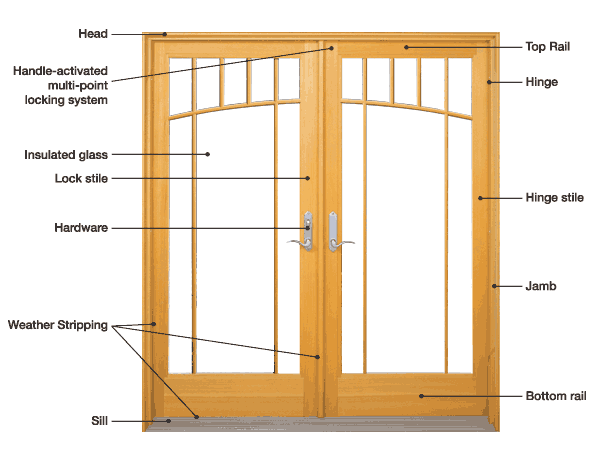
Jamb: Framing around the door.
Lite: The pane(s) of glass in a door.
Mullion: A nonstructural vertical strip between two door panels.
Muntins: Any bar that divides window or door glass. Also called a grille, grid or window pane divider.
Outswing (I/O):Door that opens outside of the building.
Panel: Decorative and nonstructural; surrounded by rails and stiles.
Rail: Horizontal framing of the door.
Simulated Divided Lites (SDL): External or internal grids that are applied to a single pane of glass to simulate separate lites.
Stile: Vertical framing of the door.
Stop: The part of the frame upon which the door panel rests when closed.
Threshold: Bottom of the door frame that covers and protects the sill.
True Divided Lites (TDL): Grids that actually separate each pane of glass. Used mostly in historical applications.
Weather Stripping: A felt or foam band, usually self-adhesive, placed at the joints of doors and windows to seal against air leaks and reduce heat loss.

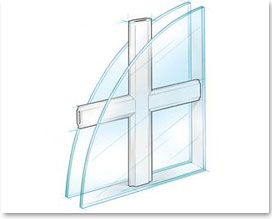
Layers of Glass
Single-Pane - Also known as a single-glazed; allows more daylight to pass through it than any other type. It, therefore, has very little insulating value. It provides only a thin barrier to the outside and thus accounts for considerable heat loss and gain.
Double-Pane - Also known as double-glazed; is the most popular choice of today in window replacement. Multiple layers of glass increase the window's ability to resist heat flow.
Triple-Pane - Also known as triple-glazed; heavier and more expensive than double-paned windows. These windows create an even more energy efficient window. A window with three panes is an investment rather than a purchase; it is most often used for northern climates and as sound proofing near airports and highways.
Types of Glass
Annealed - Glass without internal stresses caused by strengthening. Glass breaks into large sharp pieces.
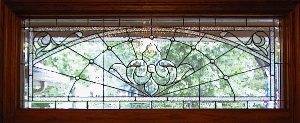
Argon - Used for thermal insulation between two panes of glass.
Beveled - Glass cut at an angle to create a decorative look and provide interesting light diffraction not seen in clear float glass.
Caming - Metal used to bond pieces of glass together in patterns for a decorative look.
Krypton - Used for thermal insulation between two panes of glass. More efficient and expensive than argon.
Laminated - Glass fused with a thin layer of laminate to improve impact resistance (windshield).
Low-Emissivity - Also known as Low-E; contains a film which reduces the passage of heat and UV rays.
Obscure - Semi-opaque to opaque privacy glass that allows light through but reduces transparency.
Self Cleaning - A nanometer scale coating of titanium dioxide that breaks down organic material and attracts water to wash it away.
Stained - Colored glass used as decorative accents.
Tempered - Strong glass that breaks into un-sharp, pebble sized pieces when broken.

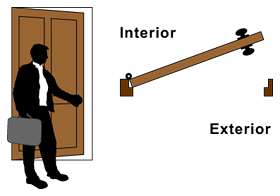
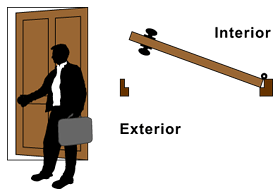
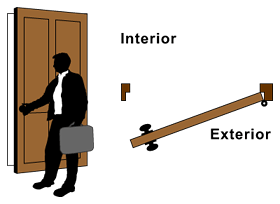


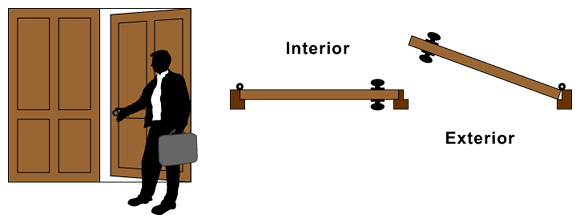
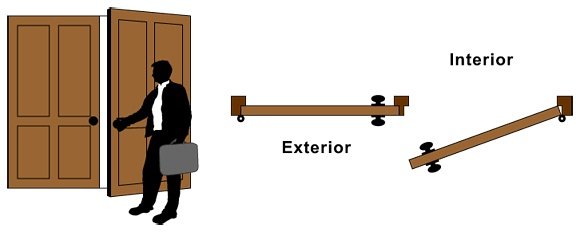
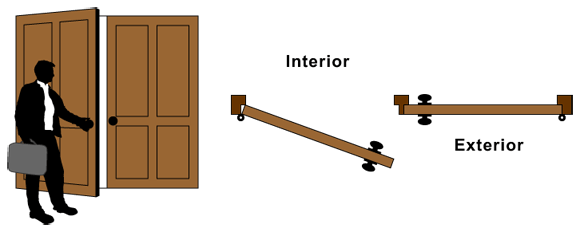

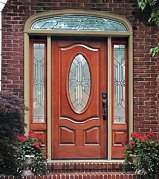
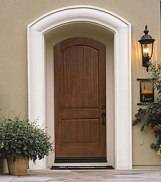
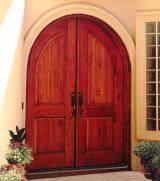
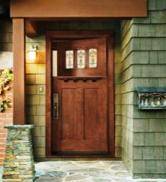
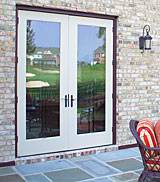
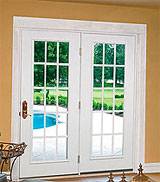
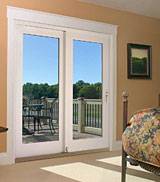


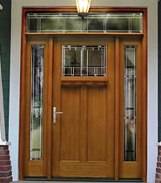
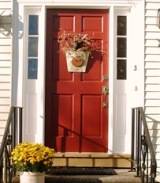
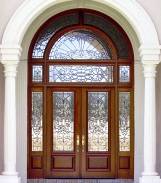
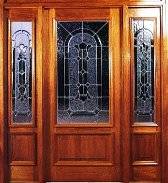
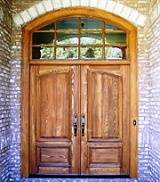

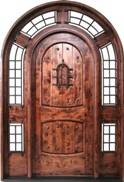

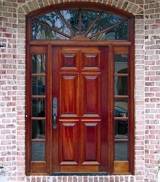


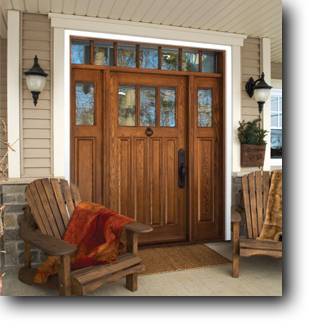
Wood: The most energy efficient; they are still the best insulation framing can offer. Wood is structural, so less is needed; which means less frame and more view. Wood doors also retain more resale value. Nothing adds as much elegance as wood.
Aluminum Clad: Offers all the beauty of wood inside without all the maintenance outside. They are appropriate for almost every climate and require minimal maintenance. In addition to delivering enhanced performance, clad-wood exteriors offer plenty of design flexibility. They are available in a range of clad color finishes to complement your home.
Vinyl Insulating performance almost equal to wood. They are low maintenance; they'll never need paint and won't flake, peel, or chip. At less than half the cost of wood doors, they allow you to stretch your investment or add more natural light to your home. They come in a wide variety of styles and colors to fit your needs and wants, and most of the products we carry include a Manufacturer's Lifetime Guarantee.
Fiberglass: The next generation of door technology. As energy efficient and low-maintenance as vinyl, but structurally strong like wood, fiberglass offers the best of both worlds. Fiberglass doors come unfinished and pre-finished from the factory, but can be repainted any color to match the changing look of your home.


















